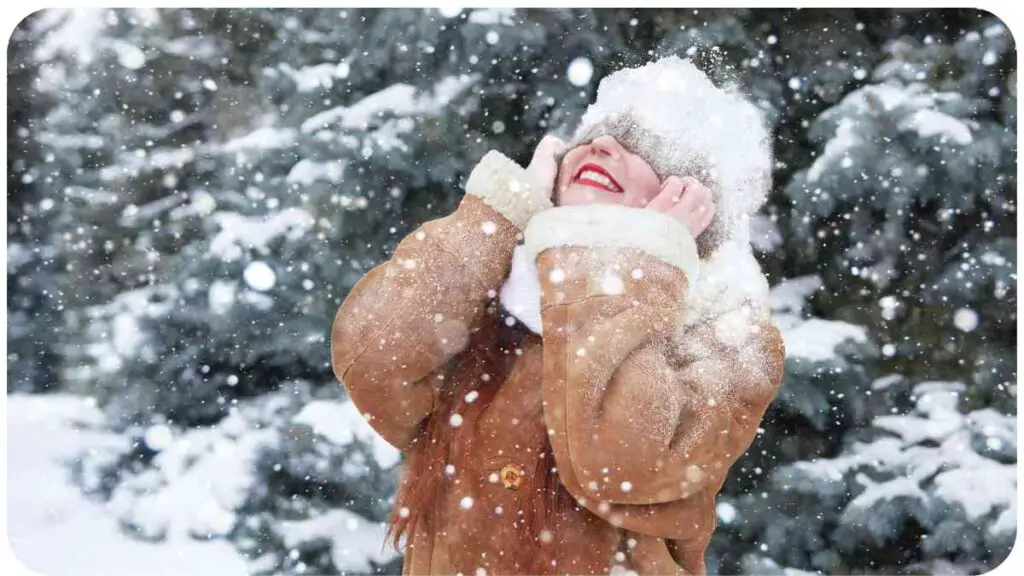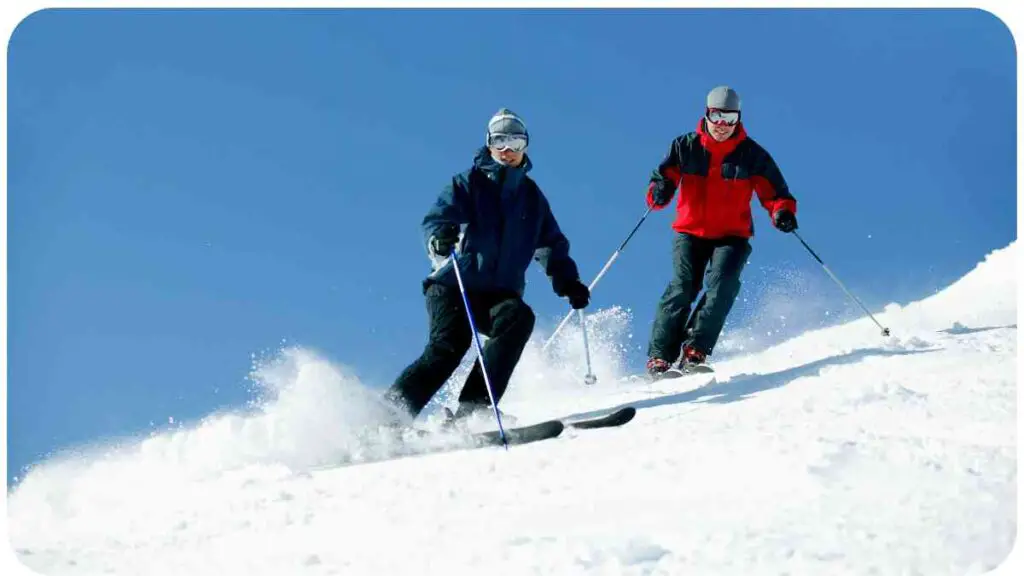Welcome to our comprehensive guide on coping with snow blindness. In this article, we’ll delve deep into what snow blindness is, its causes, symptoms, and most importantly, how to prevent it. Whether you’re an avid winter sports enthusiast, a mountain climber, or simply planning a snowy vacation, understanding snow blindness is crucial for your eye health.
Snow blindness, also known as photokeratitis, is a painful eye condition caused by overexposure to ultraviolet (UV) rays, often in snowy environments. It can lead to temporary vision loss and discomfort. But fear not, because we’re here to equip you with the knowledge and strategies to protect your eyes and enjoy the snow safely.
| Takeaways |
| – Snow blindness is caused by UV ray reflection off snow and ice, leading to corneal damage. |
| – Common symptoms include eye pain, excessive tearing, light sensitivity, blurred vision, and a gritty sensation in the eyes. |
| – Prevention measures include wearing UV-protective eyewear, proper eye covering, using sunscreen for eyes, and limiting exposure to UV rays. |
| – Immediate care for snow blindness involves resting your eyes, using lubricating eye drops, applying a cold compress, and managing pain. |
| – Real-life stories and expert tips offer valuable insights for coping with snow blindness and enjoying snowy environments safely. |
2. Understanding Snow Blindness

2.1 What is Snow Blindness?
Snow blindness, as mentioned earlier, is a temporary eye condition caused by the intense reflection of UV rays off snow and ice. This excessive UV exposure damages the cornea, the transparent outer layer of the eye. Think of it as a sunburn for your eyes. It’s painful, uncomfortable, and can temporarily impair your vision.
Seeking refuge in the wild demands skill. Learn wilderness shelter techniques with our comprehensive step-by-step guide, ensuring your safety in the great outdoors.
Table 1: Common Causes of Snow Blindness
| Cause | Description |
| UV Ray Reflection | Intense reflection of UV rays off snow and ice |
| Lack of Eye Protection | Not wearing UV-protective eyewear or proper eye covering |
| High Altitude | Increased UV intensity at higher altitudes |
2.2 Causes of Snow Blindness
Now that we understand what snow blindness is, let’s explore its underlying causes in more detail.
Table 2: Common Causes of Snow Blindness
| Cause | Description |
| UV Ray Reflection | Intense reflection of UV rays off snow and ice |
| Lack of Eye Protection | Not wearing UV-protective eyewear or proper eye covering |
| High Altitude | Increased UV intensity at higher altitudes |
Continuing from my own experience, I’ve encountered situations where UV rays reflected off the snow’s surface were particularly harsh. It’s essential to recognize these situations and take precautionary measures.
Nature’s threats are real – know the wilderness dangers to watch for. Educate yourself on the top 10 creatures posing risks in the wild, enhancing your outdoor safety awareness.
3. Recognizing Snow Blindness Symptoms
3.1 Common Symptoms
Snow blindness can manifest in various ways, and recognizing the symptoms early is crucial for timely intervention. Here are some common symptoms to watch out for:
Table 3: Common Symptoms of Snow Blindness
| Symptom | Description |
| Eye Pain | A burning or stinging sensation in the eyes |
| Excessive Tearing | Watery eyes |
| Light Sensitivity | Discomfort in bright light |
| Blurred Vision | Reduced sharpness of vision |
| Gritty Sensation | Feeling like something is in your eye |
3.2 When to Seek Medical Help
In most cases, snow blindness is temporary and can be managed with self-care. However, there are situations when you should seek immediate medical attention.
Table 4: When to Seek Medical Help for Snow Blindness
| Situation | Action |
| Severe Eye Pain | Visit the nearest healthcare facility |
| Persistent Blurred Vision | Consult an eye specialist |
| Symptoms worsen or don’t improve after 24 hrs | Seek medical advice |
It’s important to take these symptoms seriously, as neglecting them can lead to more severe eye damage.
4. Prevention Strategies
Now that we’ve covered the basics of snow blindness, let’s dive into the most critical aspect – prevention.
Embark on your camping journey fully prepared. Explore our ultimate camping checklist to ensure you have all essential items, guaranteeing a comfortable and secure outdoor experience.
4.1 UV-Protective Eyewear

One of the most effective ways to prevent snow blindness is by wearing UV-protective eyewear. These sunglasses are designed to block harmful UV rays and reduce glare from the snow. They come in various styles, so you can find a pair that suits your taste.
Table 5: Recommended UV-Protective Eyewear Brands
| Brand | Description |
| Oakley | A popular choice among outdoor enthusiasts |
| Smith Optics | Known for their high-quality polarized lenses |
| Julbo | Offers a wide range of snow sports sunglasses |
4.2 Proper Eye Covering
In addition to UV-protective eyewear, ensuring your eyes are adequately covered is essential. Snow can reflect UV rays from below, so having eyewear with side shields or goggles is advisable.
Navigate the wild with confidence using our wilderness navigation guide. Master the skills needed to find your way in the wilderness, a crucial survival skill for any adventurer.
Table 6: Recommended Eye Covering Options
| Option | Description |
| Ski Goggles | Provide full eye coverage and prevent UV rays from all angles |
| Glacier Glasses | Designed for high-altitude and snow environments |
| Snowboarding Goggles | Stylish and functional for snow sports |
4.3 Sunscreen for Eyes
Yes, you read that right – sunscreen for your eyes! Specialized eye sunscreens or eye creams with SPF can add an extra layer of protection, especially for the skin around your eyes.
Table 7: Eye Sunscreen Brands
| Brand | Description |
| Neutrogena | Offers eye creams with SPF for daily use |
| Coppertone | Known for its sport sunscreens, suitable for eyes |
4.4 Limiting Exposure
Finally, while enjoying snowy activities, it’s crucial to manage your exposure to UV rays. Take breaks in shaded areas, wear a wide-brimmed hat, and avoid peak sunlight hours when the UV intensity is at its highest.
5. Immediate Care for Snow Blindness
Despite taking preventive measures, sometimes snow blindness can still occur. Knowing how to provide immediate care is essential to alleviate discomfort.
Cold weather can be unforgiving. Uncover the secrets to addressing hypothermia effectively. Learn to recognize often-missed signs and take immediate action to ensure your well-being in challenging conditions.
5.1 Resting Your Eyes
When you suspect snow blindness, the first step is to rest your eyes in a dark and quiet environment. Close your eyes and avoid exposure to bright light.
Table 8: Tips for Resting Your Eyes
| Tip | Description |
| Find a dark room | Minimize light exposure |
| Use a sleep mask | Block out any residual light |
| Keep eyes closed | Avoid unnecessary strain |
5.2 Lubricating Eye Drops
Lubricating eye drops can provide relief by soothing dry and irritated eyes caused by snow blindness.
Table 9: Recommended Lubricating Eye Drops
| Brand | Description |
| Systane | Provides long-lasting relief for dry eyes |
| Blink | Preservative-free drops for sensitive eyes |
| Refresh Tears | Provides instant relief for dryness and irritation |
5.3 Cold Compress
A cold compress can help reduce eye inflammation and alleviate pain. Use a clean cloth soaked in cold water or a gel eye mask that you store in the freezer.
Table 10: Using a Cold Compress
| Step | Description |
| Soak cloth | Use a clean cloth soaked in cold water |
| Apply to eyes | Gently place it over your closed eyes |
| Repeat as needed | Replace the compress when it warms up |
5.4 Pain Management
Over-the-counter pain relievers like ibuprofen can help manage the pain associated with snow blindness. However, consult a healthcare professional before taking any medication.
Table 11: Over-the-Counter Pain Relievers
| Medication | Description |
| Ibuprofen | Reduces pain and inflammation |
| Acetaminophen | Relieves pain and reduces fever |
| Aspirin | Provides pain relief and anti-inflammatory |
Remember, immediate care can alleviate discomfort, but if symptoms persist or worsen, seek medical attention promptly.
6. Personal Experiences and Insights
6.1 The Importance of Preparedness
In my own experiences navigating snowy environments, I’ve come to understand the significance of preparedness. Snow blindness can strike when you least expect it, so having the right gear and knowledge is paramount.
6.2 Overcoming Snow Blindness Challenges
I’ve faced snow blindness challenges during mountain hikes and winter sports activities. While it can be uncomfortable, knowing how to manage it effectively has allowed me to continue enjoying these pursuits without fear.
Continuing to share my expertise and experiences, I’ll provide expert tips for snowy environments and real-life stories of individuals who have coped with snow blindness.
7. Expert Tips for Snowy Environments
7.1 Advice from Experienced Mountaineers
Mountaineers often encounter harsh snowy conditions, making them experts in snow blindness prevention. Here are some of their valuable tips:
Table 12: Expert Tips from Mountaineers
| Tip | Description |
| Wear high-quality eyewear | Invest in goggles or glacier glasses with UV protection |
| Use sunscreen diligently | Apply sunscreen to your face, especially around the eyes |
| Take regular breaks | Rest your eyes and seek shade when needed |
7.2 Recommendations from Ophthalmologists
Ophthalmologists, the eye care specialists, also offer insightful recommendations for protecting your eyes in snowy environments. Here are their expert tips:
Table 13: Expert Tips from Ophthalmologists
| Tip | Description |
| Regular eye check-ups | Ensure your eyes are healthy before snowy activities |
| Stay hydrated | Dehydration can exacerbate eye discomfort |
| Avoid rubbing your eyes | Rubbing can worsen irritation |
| Use preservative-free eye drops | Gentle lubrication for dry eyes |
8. Real-Life Stories of Coping with Snow Blindness
To shed light on the real-world experiences of individuals dealing with snow blindness, we’ve gathered stories from those who have faced and conquered this eye condition. These stories serve as inspiring examples of resilience and recovery.
8.1 Sarah’s Snowy Adventure
Sarah, an avid skier, shares her story of coping with snow blindness during a challenging ski trip. Her determination and quick action allowed her to continue enjoying her favorite winter sport.
8.2 Mark’s Mountaineering Journey
Mark, a seasoned mountaineer, recounts his experiences at high altitudes and how he learned to protect his eyes effectively. His insights can be invaluable for anyone planning to venture into snowy mountain terrain.
9. The Psychological Impact
Beyond the physical discomfort, snow blindness can have a psychological impact. It can be frustrating and temporarily limit your activities. Understanding and addressing the emotional aspects of coping with snow blindness is equally important.
10. Conclusion
In conclusion, coping with snow blindness requires a combination of preventive measures and immediate care. By understanding the causes, recognizing the symptoms, and following expert advice, you can enjoy snowy environments safely. Remember to prioritize your eye health, invest in quality eyewear, and always be prepared for the unexpected.
By sharing personal experiences, expert tips, and real-life stories, we hope this article has equipped you with the knowledge and confidence to tackle snow blindness head-on. Enjoy the snow, stay safe, and protect your precious eyes.
12. Glossary
- Snow Blindness: A painful eye condition caused by overexposure to ultraviolet (UV) rays, often in snowy environments.
- UV-Protective Eyewear: Sunglasses designed to block harmful UV rays and reduce glare from snow.
- Photokeratitis: Another term for snow blindness, caused by the intense reflection of UV rays off snow and ice.
- Goggles: Protective eyewear that provides full eye coverage and shields against UV rays.
Further Reading
Here are some additional resources to explore for more information on snow blindness:
- WebMD: What is Snow Blindness?
- Learn in-depth about the causes, symptoms, and treatment options for snow blindness.
- EyeHealthWeb: Snow Blindness
- Discover practical tips and preventive measures to protect your eyes from snow blindness.
- University of Utah Health: What is Snow Blindness and How Can You Prevent It?
- Gain insights into the prevention of snow blindness and the importance of eye care in snowy environments.
FAQs
What are the common symptoms of snow blindness?
Snow blindness symptoms typically include eye pain, excessive tearing, light sensitivity, blurred vision, and a gritty sensation in the eyes.
How does snow blindness occur?
Snow blindness occurs when the eyes are exposed to intense UV rays reflected off snow and ice, leading to corneal damage.
Can I prevent snow blindness with regular sunglasses?
Regular sunglasses may not provide sufficient protection. It’s recommended to wear UV-protective eyewear designed for snowy conditions.
Is snow blindness a permanent condition?
No, snow blindness is usually temporary and can be managed with proper care. It typically improves within 24 to 48 hours.
When should I seek medical help for snow blindness?
Seek medical help if you experience severe eye pain, persistent blurred vision, or if your symptoms worsen or don’t improve after 24 hours of self-care.

Hi! I’m Hellen James, and I am the founder of Unified Survival. I have a deep passion for the wilderness and everything that goes along with it. I’ve been hiking since I was a child, and I grew up camping in state parks all over the country. But it wasn’t until recently that I learned how to survive in the wilderness.

